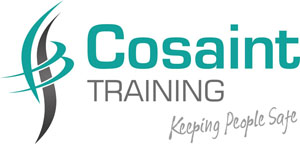Accident investigation is one of the most challenging aspects of a Health and Safety Manager’s role – the investigation needs to uncover a full picture of the incident, being sufficiently detailed, while also ensuring lines of communication remain open.
A Health and Safety practitioner is also carrying out an accident investigation in the knowledge that a HSE inspection or compensation claim could be just around the corner, which can increase the pressure to make sure the accident report is detailed, and that corrective action is taken quickly.
Here are six top tips to help ensure your accident investigations are solid:
1. Don’t Look For Someone To Blame
Generally, employees try to do a good job and a decision or set of circumstances leads to an accident, as opposed to it being malice or sabotage. Creating a blame-culture will make accident reporting rates drop, which removes the opportunity to improve systems and implement corrective actions to improve safety.
Consider a variety of factors that can contribute to an accident occurring, including: production pressures, poor communication, lack of suitable training, and incorrect tools and equipment. Where an accident is determined to be an operator error, or as the result of an employee taking a short cut, this should be recorded on the accident report.
2. Investigate Incidents and Near Misses
Many employees will disagree over the definition of a “near miss”, an “incident” and an “accident”, but all are learning opportunities and all should be investigated, with appropriate actions taken to help prevent future occurrences.
3. Avoid Knee-Jerk Reactions
When an accident occurs, the common response is to take immediate action to rectify the situation. However, without proper investigation and determination of the root cause, actions taken may be insufficient and can even introduce new hazards with new risks. Following an accident, making the area safe and secure and ensuring there are no immediate risks to employees or others is a logical step to take, but changes to processes, systems, or employee training should be adopted after the accident has been fully investigated.
4. Investigate Thoroughly
Don’t go into an accident investigation assuming that you already know how the accident happened – be open minded and gather all relevant facts and witness statements. Investigations should begin promptly after the accident occurred, and all documents and records should be dated. Hand-written notes should be formally typed up and signed as soon as possible, and any photographs of the scene or injuries should be held with the investigation report.
5. Train The Investigator
To carry out effective accident investigations, you need to ensure the employee carrying them out is suitably trained and skilled – watching three seasons of CSI Miami just won’t cut it. A one day training course such as Cosaint Training’s Accident Investigation programme, delivered by a specialist with over 32 years’ experience, can help to ensure your accident investigator knows what they are doing. Toolbox talk training to all employees can then be cascaded down on what to do in the event of an accident – such as not changing the scene of the accident, and understanding the importance of reporting all accidents when they occur.
6. Share The Information
The results of accident investigations should be shared widely with the management team to ensure the root causes and subsequent changes are well communicated, and to make others aware of potential hazards within their work environments that could cause a repeat incident.
For more information, check out HSE’s guide – HSG245 Investigation Accidents and Incidents – or contact us on 02890 825454 to book your place on our Accident Investigation training course.







Leave A Comment